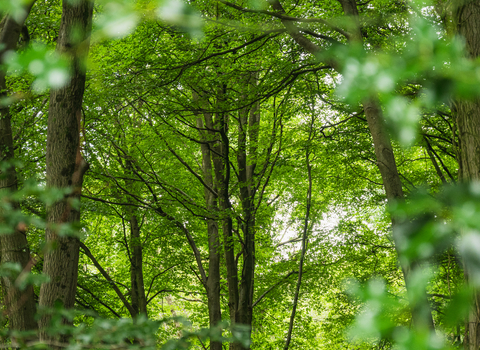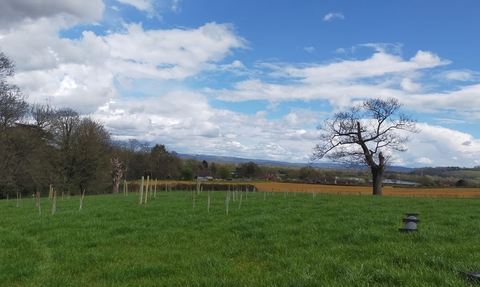
Severn Solutions for Nature’s Recovery
A partnership between Gloucestershire Wildlife Trust and the Hasfield Estate and funded through Natural England’s Nature Returns programme, the project will showcase how the restoration of semi-natural habitats can deliver nature-based solutions for climate change. We will show how this can work within a farmed landscape, including through generating sustainable business and investment opportunities and providing benefit to local communities.
We’ll do this through the creation of 43 hectares of wood pasture, species rich grassland and traditional orchards across the Estate. These habitats were selected for their potential to store and sequester carbon and reduce greenhouse gases, whilst enhancing ecological connectivity and providing species resilience across the landscape.

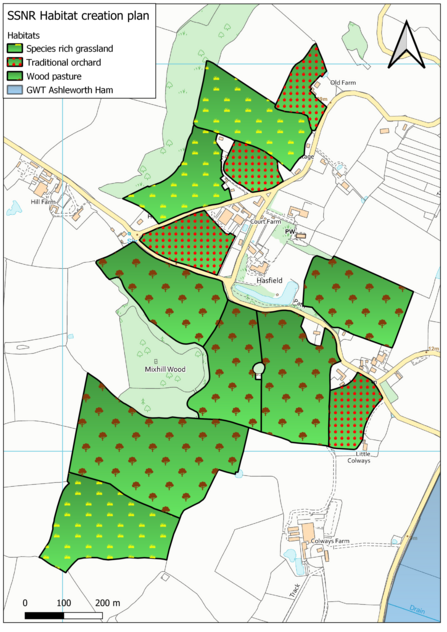
The project area lies within a strategically important Nature Recovery Zone (Severn Hams) and is adjacent to the Eelscapes project, funded by DEFRA’s Landscape Recovery Scheme.
Please be aware that Hasfield Estate is a private estate with limited rights of way running through it. However, there are opportunities fro visiting during events, workshops and volunteering sessions, you can find more about volunteering here.
Habitats
Species rich grassland
What is it?
Open, grassy habitat that is normally maintained by traditional grazing and cutting methods. It will include wildflower and sedge cover, and will have less than 10% cover of white clover and perennial rye grass. Species rich grassland now only covers 1% of the UK, with 97% lost between 1930 and 1984.
What are we doing?
We’re creating 12.6 hectares of this habitat, in locations that will connect up remnant surviving habitat across three field parcels at the Estate. This will form a mosaic of open habitat with existing priority woodland and other habitat restoration work.
What are the benefits?
Carbon - the restoration of plant diversity has been demonstrated to increase soil carbon and nitrogen storage.
Climate change adaptation- co-benefits such as sequestering carbon, holding back water, nutritional benefits, biological pest control are all provided by this habitat.
Biodiversity- a high diversity of native wildflowers and grasses will provide an important nectar source for invertebrates throughout the year. Diverse and abundant invertebrate communities provide nutritional benefit for a host of bird and mammal species.
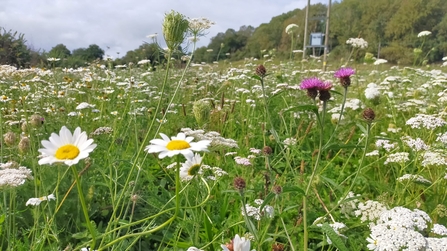
Wood pasture
What is it?
Wood pasture is a diverse matrix habitat of open woodland, scrub and grassland, maintained grazing and supporting a rich community of species. Mature wood pasture contains ancient and veteran trees which feature hollowed and decaying wood, providing multiple nesting opportunities and supporting a wide range of invertebrates, lichen and fungi. Species rich grassland is often a feature of wood pasture.
What are we doing?
Maps suggest that wood pasture was present historically on the Estate, with many more in-field trees than currently exist. We’ll be creating 23.4 hectares of lowland wood pasture across five field parcels, forming a network with existing priority habitat and a wider wooded landscape mosaic.
What are the benefits?
Carbon- evidence shows a significant benefit to soil carbon rates after land conversion from agriculture and pasture-grassland to agroforestry. This move in land use increased soil organic carbon by an average of 34%. Old wood pasture trees are significant carbon stores.
Climate change adaptation- planting trees in farm systems improves grass growth and protects against flooding and topsoil erosion. The trees increase biodiversity and animal welfare, by providing structure and shading, mitigating against heatwaves and providing localised climate control.
Biodiversity- the diversity of wood pasture will directly support a range of species, including bats, birds, insects and fungi. The interaction between the tree root systems and soil biology promotes mycorrhizal activity and the open structure of wood pasture enables continued grazing beneath the canopy, with the dung from grazing animals contributing further to invertebrate and fungal diversity.
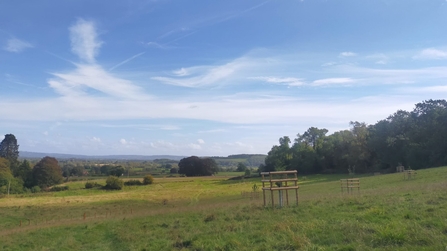
Traditional orchard
What is it?
Whilst structurally and ecologically similar to wood pasture, orchards are generally distinguished by their species composition. They often take the form of widely spaced fruit or nut trees on permanent grassland that may be grazed by livestock or cut for hay. The often seen combination of fruit trees, grassland, hedgerow boundaries, scrub and standing/fallen deadwood means that traditional orchards offer a mosaic of different habitats which support a vast range of species.
What are we doing?
A 1903 OS map shows us that a significant amount of land around the estate was given over to traditional orchards, largely lost due to agricultural modernisation. 6.8 hectares of traditional orchard creation are planned as part of the project, with proposed locations where historic orchards existed.
What are the benefits?
Carbon- Fruit and nut tree systems can fix significant amounts of carbon, but we’ve not yet explored this potential in the UK. Elsewhere, studies have found convincing evidence of carbon sequestration from orchards.
Climate change adaptation- similarly to wood pasture, orchards provide a defence against inland flooding and erosion, provide shading and localised climate control, ground water capture and water quality improvement. Not only this, they have significant cultural value as aesthetic and historical features of our landscape.
Biodiversity- the creation of new orchards will provide foraging, breeding and hibernation sites for many species, including bats, birds and reptiles. It will also help to safeguard the 100 apple and more than 120 perry varieties that are unique to Gloucestershire. One apple tree can support over 1000 species of invertebrates due to the unique habitat formed, with fruit blossoms providing an excellent nectar source for bees, hoverflies and moths.
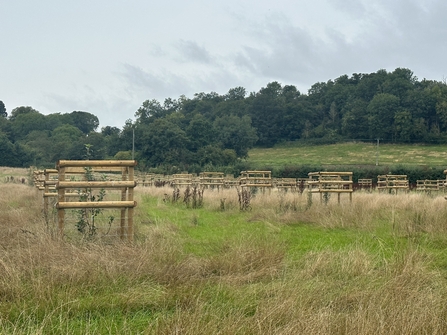
This project is part of the Nature-based Solutions for Climate Change at the Landscape Scale Programme, led by Natural England in close partnership with the Environment Agency, Forestry Commission and RBG Kew, Wakehurst. This Shared Outcomes Funded Programme is sponsored by Defra and DESNZ.

